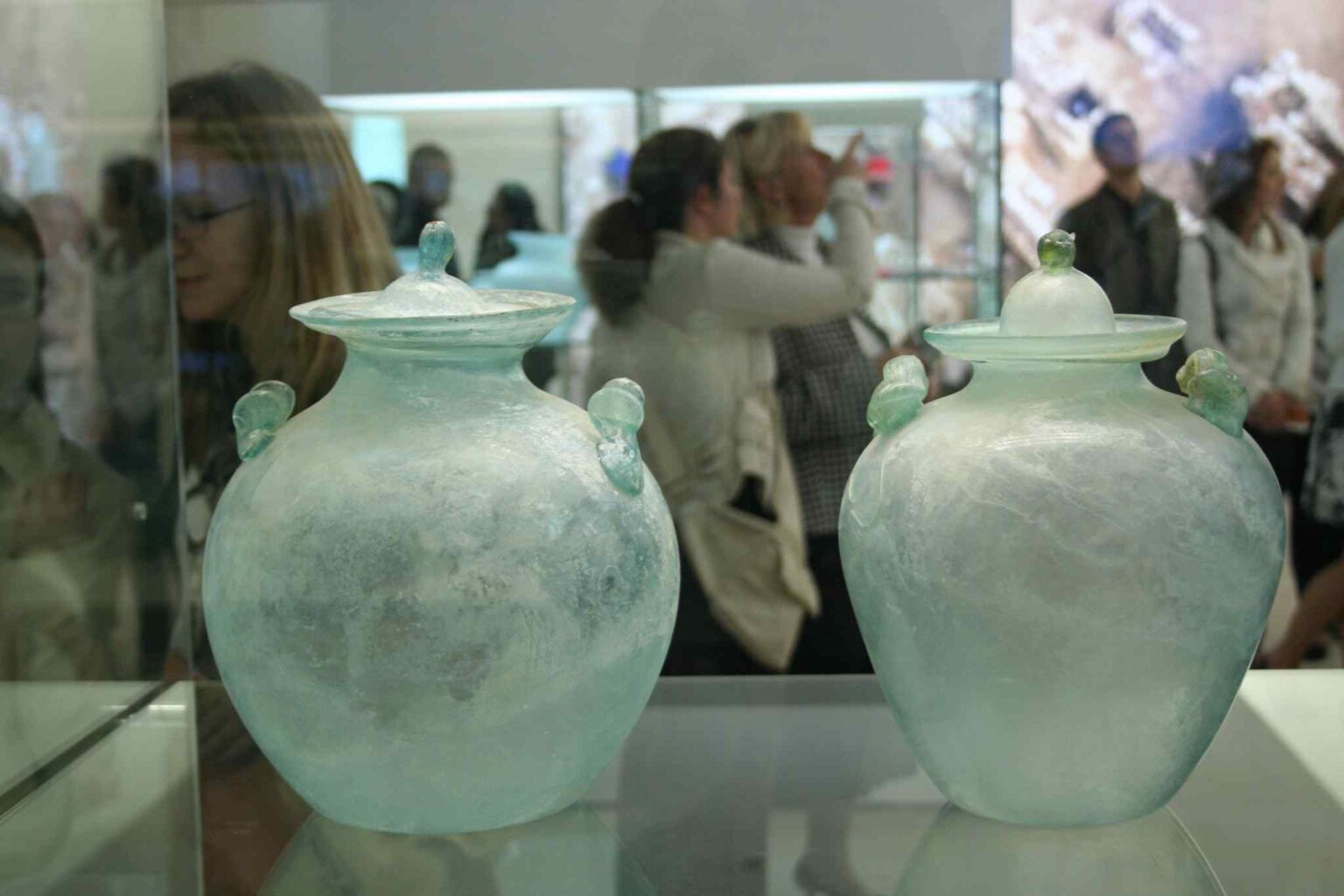Ever wondered how ancient Romans sipped their wine? Or perhaps, how they gazed through windows before the invention of modern glass-making techniques?
The Museum of Ancient Glass in Zadar, Croatia, offers a fascinating glimpse into the world of Roman glassware and glass-making. Prepare to be amazed by the delicate artistry and intricate craftsmanship of these ancient treasures.
Museum Overview
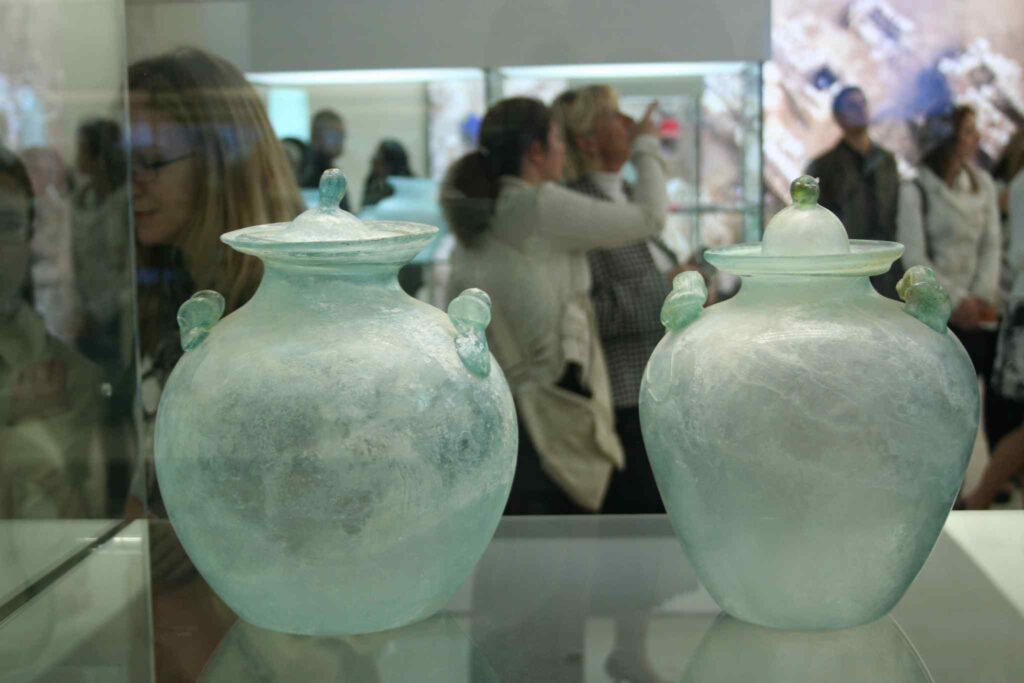
Step into the Museum of Ancient Glass in Zadar, Croatia, and you’ll be transported to a world where ancient techniques meet stunning works of art.
With over 5,000 glass objects on display, this unique museum takes you on a fascinating journey through the evolution of glassmaking, with a special focus on the Roman era.
What makes this museum truly special is the opportunity to witness live glassblowing demonstrations.
Skilled craftsmen showcase the ancient techniques used to create these stunning works of art, giving you a deeper appreciation for the skill and dedication required to master this centuries-old craft.
As you wander through the exhibits, you’ll discover an incredible range of glass objects, from delicate perfume bottles to intricately designed drinking vessels.
Each piece tells a story of the artisans who created them and the societies in which they lived.
The museum’s thoughtful curation provides an in-depth overview of the evolution of glassmaking techniques and styles throughout history.
With every exhibit, you’ll gain a deeper understanding of the craftsmanship and history behind these exquisite pieces. So, get ready to be mesmerized by the beauty and craftsmanship on display at the Museum of Ancient Glass.
Ancient Glass Collection
The Museum of Ancient Glass is home to an astonishing collection of over 5,000 ancient glass objects, offering a fascinating glimpse into the artistry and craftsmanship of glassmakers from the Roman era.
The extensive collection features a wide array of Roman glass products, including delicate jewelry, large drinking vessels, storage containers, and more.
What’s striking about this collection is that it showcases the region’s significance in ancient Roman glass production.
The artifacts, sourced from archaeological sites across Croatia, demonstrate the exceptional skill and creativity of ancient glassmakers.
They achieved an astonishing accomplishment in creating both functional and decorative pieces that have stood the test of time.
Take, for instance, the intricately designed cups, skillfully crafted bowls, and beautifully preserved vases.
These artifacts highlight the exceptional craftsmanship of ancient glassmakers, who managed to create exquisite pieces that are both aesthetically pleasing and functional.
Visitors to the museum can marvel at the intricacy and beauty of these ancient glass objects, gaining a deeper appreciation for the rich history of glassmaking in Croatia during the Roman Empire era.
The museum’s collection is a testament to the creativity and skill of ancient glassmakers, who continue to inspire and awe people to this day.
Glass-Making Techniques
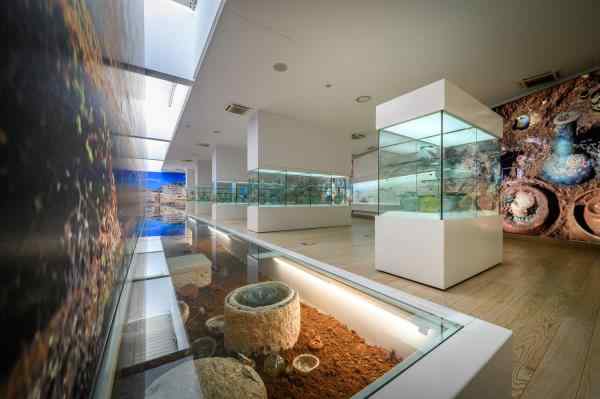
Step into the Museum of Ancient Glass and get ready to be mesmerized by the exquisite beauty of ancient glass.
But that’s not all – this museum also offers a fascinating glimpse into the techniques used by Roman glassmakers to create these masterpieces.
Ever wondered how Roman artisans crafted such intricate glass pieces? The museum’s glassblowing workshop is where the magic happens.
Skilled demonstrators showcase traditional methods, including free-blowing, mold-blowing, and casting.
Free-blowing is an art form that requires precision and skill. The glassmaker gathers molten glass on the end of a blowpipe, shaping it by blowing air through the pipe while rotating and swinging the glass.
Mold-blowing, on the other hand, involves inflating molten glass into a pre-shaped mold, allowing for more intricate designs and patterns.
Casting, a more straightforward process, involves pouring molten glass into a mold and letting it cool and solidify.
Watching these techniques in action not only educates but also inspires. You’ll marvel at the metamorphosis of molten glass into stunning works of art, just as the Romans did centuries ago.
Interactive Exhibits
Immerse yourself in the fascinating world of ancient glassmaking at the Museum of Ancient Glass, where interactive exhibits bring history to life.
| Interactive Exhibit | Description |
|---|---|
| Live Glassblowing Demonstrations | Watch artisans create intricate glass pieces, just like they did during the Roman Empire |
| Hands-on Workshops | Try your hand at making your own glass jewelry or souvenirs under the guidance of experienced glassmakers |
| Multimedia Presentations | Learn about the history of glassmaking, from its origins to its current techniques |
| Touch Screens | Discover the properties and techniques of glass, and how they’ve evolved over time |
| Virtual Reality Experiences | Step into ancient glassmaking workshops and experience the craft firsthand |
The museum’s interactive exhibits are designed to captivate visitors of all ages, providing an in-depth understanding of the history, techniques, and artistry behind the creation of Roman glass.
By combining multimedia presentations, touch screens, and virtual reality experiences, the museum offers a unique opportunity to engage with the craft in a hands-on and immersive way.
Glassblowing Workshops
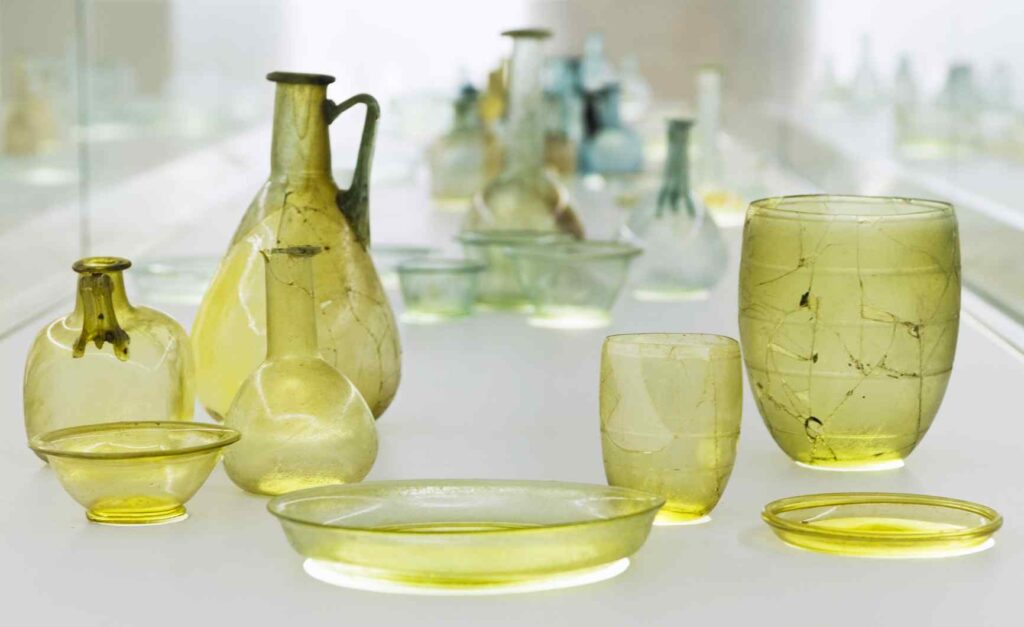
Get ready to be mesmerized by the ancient art of glassblowing at the Museum of Ancient Glass!
Skilled artisans will demonstrate the techniques used to create intricate glass pieces, just like they did during the Roman Empire.
In the museum’s glassblowing workshop, you’ll have the unique opportunity to observe and participate in this ancient craft.
Guided by experienced instructors, you’ll learn various techniques, such as shaping, blowing, and molding molten glass into beautiful and functional pieces.
Whether you’re a beginner or an experienced glass aficionado, the workshop is designed to cater to your needs, providing a hands-on experience that allows you to create your own handmade glass souvenirs.
The glassblowing workshops typically take place in the morning, giving you a chance to witness the process firsthand and gain insight into the art of glassmaking, which has been refined over centuries.
What’s more, you’ll take home a unique piece of art from your visit, serving as a reminder of the enduring legacy of glassblowing. Don’t miss the chance to marvel at the artisans’ skills and get a glimpse into the Roman era!
Gift Shop
After touring the glassblowing workshops, be sure to visit the museum’s gift shop, where you can find unique glass-related items and souvenirs that’ll make your visit even more memorable.
In our gift shop, you’ll discover a treasure trove of stunning pieces, from jewelry to decorative objects that make perfect gifts or mementos of your visit.
| Item Category | Description | Price Range | Popularity |
|---|---|---|---|
| Jewelry | Necklaces, earrings, bracelets made from glass | $20 – $100 | High |
| Decorative Objects | Vases, bowls, figurines, and other glass art | $30 – $200 | Medium |
| Glassblowing Kits | Starter kits for aspiring glassblowers | $50 – $150 | Low |
| Books and DVDs | Educational materials on glassblowing and history | $15 – $50 | Medium |
Beyond these items, we also carry postcards, t-shirts, and other souvenirs featuring images of the museum’s most popular exhibits.
Whether you’re looking for a special gift or a unique addition to your own collection, our gift shop has something for everyone.
Visitor Information
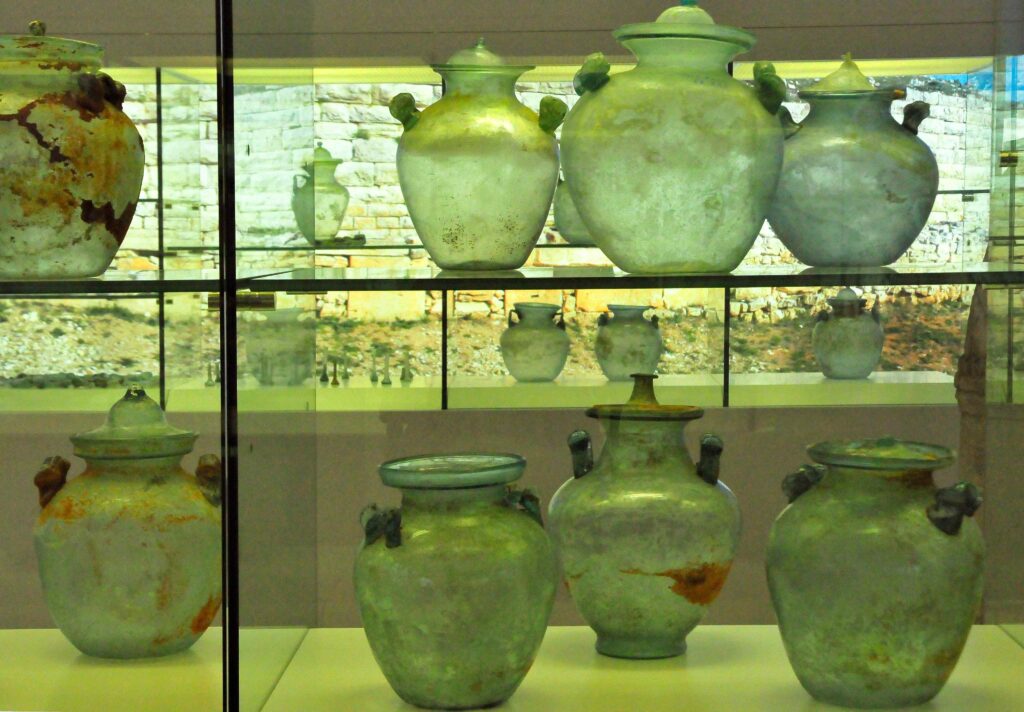
Get ready to uncover the secrets of ancient glassmaking at the Museum of Ancient Glass in Zadar, Croatia.
Located at Poljana Zemaljskog odbora 1, just a short stroll from the stunning Croatian coast, this museum is a must-visit for anyone curious about the art and science of glassmaking.
For a mere 6 euros, adults can delve into the museum’s impressive collection of over 1500 exquisite glass objects from antiquity, carefully curated into eight thematic displays.
Want to stay up-to-date on the latest events and exhibitions? Sign up for the museum’s newsletter via email at info@mas-zadar.hr.
While you’re at it, be sure to browse the museum’s well-stocked souvenir shop, featuring unique publications and handcrafted items made right in the museum’s workshops. It’s the perfect place to pick up a one-of-a-kind memento or gift.
But that’s not all – the museum offers a range of hands-on workshops throughout the year, giving you the chance to get up close and personal with the art of glassmaking.
From mesmerizing glassblowing demonstrations to crafting your own glass jewelry or fused glass souvenirs, these interactive activities will leave you with a deeper appreciation for the craftsmanship that goes into creating these stunning pieces.
Whether you’re a history buff, an art enthusiast, or simply curious, the Museum of Ancient Glass promises an unforgettable journey through time and craftsmanship.
So why not plan your visit today and discover the fascinating world of ancient glass?
Frequently Asked Questions
How to Identify Roman Glass?
To identify Roman glass, look for iridescent sheen, patina, bubbly texture, and characteristic shapes like amphorae.
Colors such as cobalt blue, emerald green, and amber are also indicative of Roman glassmaking techniques.
What Were the Objects in Ancient Glass?
Ancient glass objects included perfume bottles, cups, vases, and jars used for storing food, cosmetics, and decorative purposes.
These pieces showcased the skill of Roman glassmakers, often featuring intricate designs and delicate craftsmanship, showcasing an impressive achievement.
How to Make Glass in Ancient Times?
Crafted from the elements, ancient glass was born in the flames. Sand, soda ash, and lime were heated to extreme temperatures in clay furnaces, then shaped by skilled artisans into timeless works of art.
What Was the Composition of Ancient Glass?
Ancient glass was composed of silica-rich sand or crushed quartz, soda (sodium carbonate), and lime (calcium oxide). Colorants like cobalt for blue glass or iron oxide for green glass were added to create vibrant hues.




